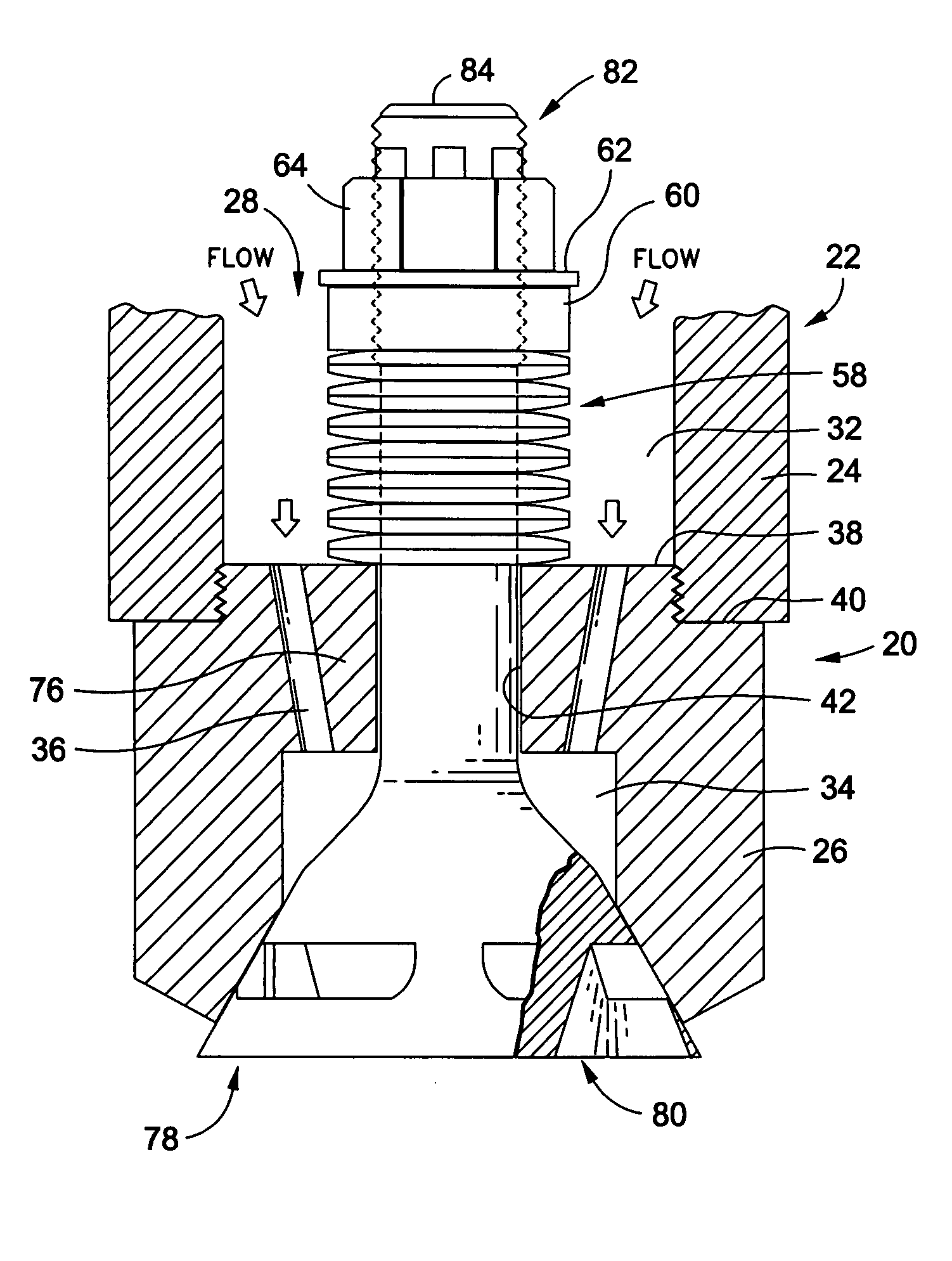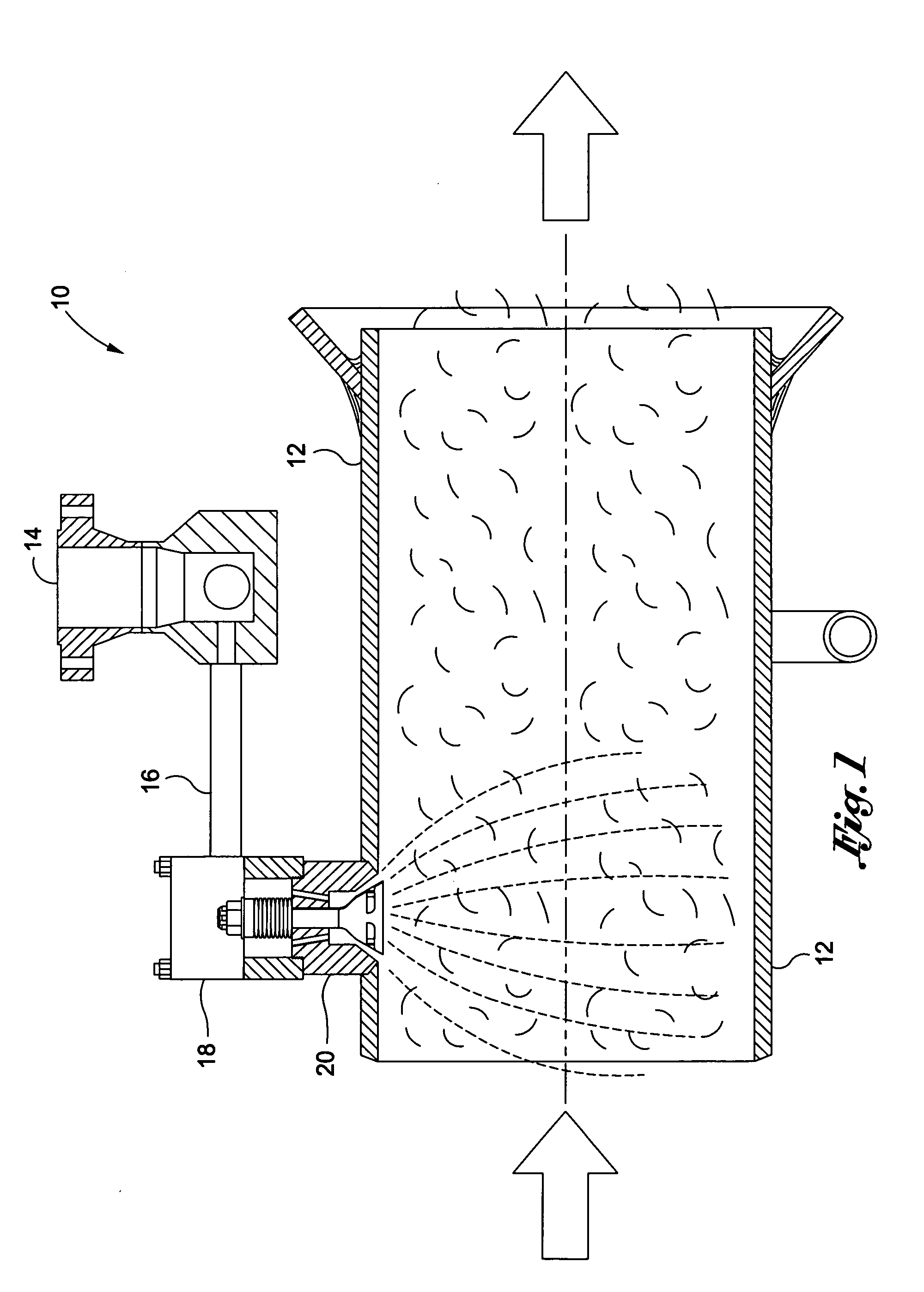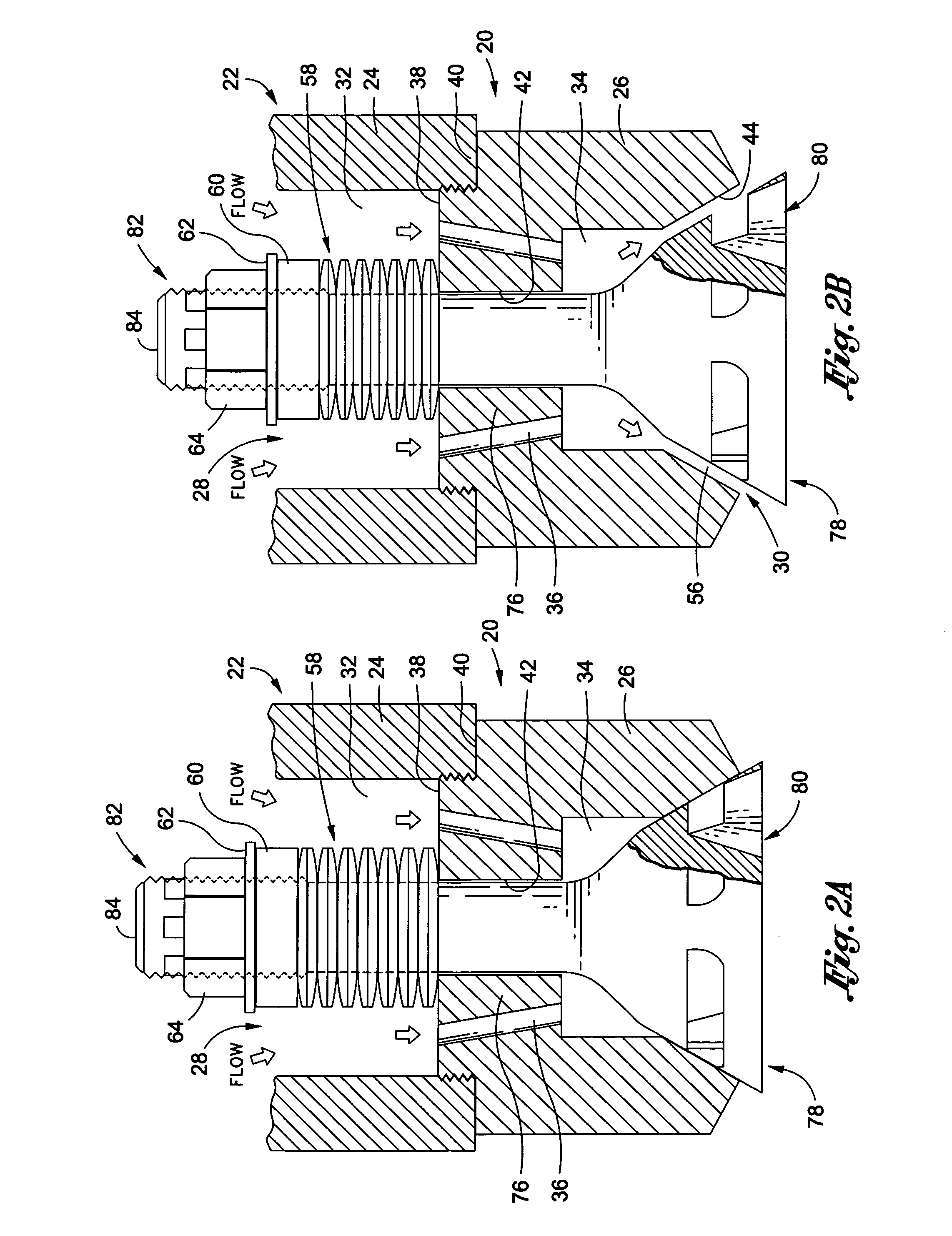Desuperheater spray nozzle
a superheating and spray nozzle technology, applied in the direction of check valves, machines/engines, combustible gas purification/modification, etc., can solve the problems of uneven and poorly controlled temperature reduction throughout the flow of the superheating, water buildup, structural failure, etc., to improve the absorption and evaporation efficiency of the cooling water, and the effect of simple manufacturing
- Summary
- Abstract
- Description
- Claims
- Application Information
AI Technical Summary
Benefits of technology
Problems solved by technology
Method used
Image
Examples
second embodiment
[0063]Referring now to FIGS. 7 and 8, there is shown a valve element 78a constructed in accordance with the present invention. The valve element 78a is substantially similar in structure and function to the above-described valve element 78, with only the distinctions between the valve elements 78, 78a being highlighted below.
[0064]The sole distinction between the valve elements 78, 78a lies in the outer end surface of each of the ribs 96a in the valve element 78a being stepped relative to the lower edge 92a of he nozzle cone 86a thereof. This is in contrast to the valve element 78 which is an in-line profile wherein the outer surface of the fracture ring 98, the outer end surfaces of the ribs 96, and the outer surface 88 of the nozzle cone 86 are substantially flush or continuous with each other as indicated above. With the stepped profile, the outer surfaces of the fracture ring 98a and ribs 96a, while being substantially flush or continuous with each other, are at a slightly acute...
third embodiment
[0065]Referring now to FIGS. 9-13, there is shown a valve element 106 constructed in accordance with the present invention. The valve element 106 comprises a valve body 108 and an elongate valve stem 110 which is integrally attached to the valve body 108 and extends axially therefrom. The valve stem 110 has a generally circular cross-sectional configuration, and defines a distal end 112. It is contemplated that a distal portion of the valve stem 110 extending to the distal end 112 thereof may be externally threaded for purposes of facilitating the operative interface of the valve element 106 into the above-described nozzle assembly 20. The valve stem 110, like the valve stem 82 of the valve element 78, is sized and configured to be slidably advanceable through the valve stem bore 42 of the nozzle housing 22. In this regard, the valve stem 110 is sized and configured to be complimentary to the valve stem bore 42 such that an axially sliding fit is provided therebetween. This allows t...
PUM
| Property | Measurement | Unit |
|---|---|---|
| half angle | aaaaa | aaaaa |
| half angle | aaaaa | aaaaa |
| temperature | aaaaa | aaaaa |
Abstract
Description
Claims
Application Information
 Login to View More
Login to View More - R&D
- Intellectual Property
- Life Sciences
- Materials
- Tech Scout
- Unparalleled Data Quality
- Higher Quality Content
- 60% Fewer Hallucinations
Browse by: Latest US Patents, China's latest patents, Technical Efficacy Thesaurus, Application Domain, Technology Topic, Popular Technical Reports.
© 2025 PatSnap. All rights reserved.Legal|Privacy policy|Modern Slavery Act Transparency Statement|Sitemap|About US| Contact US: help@patsnap.com



